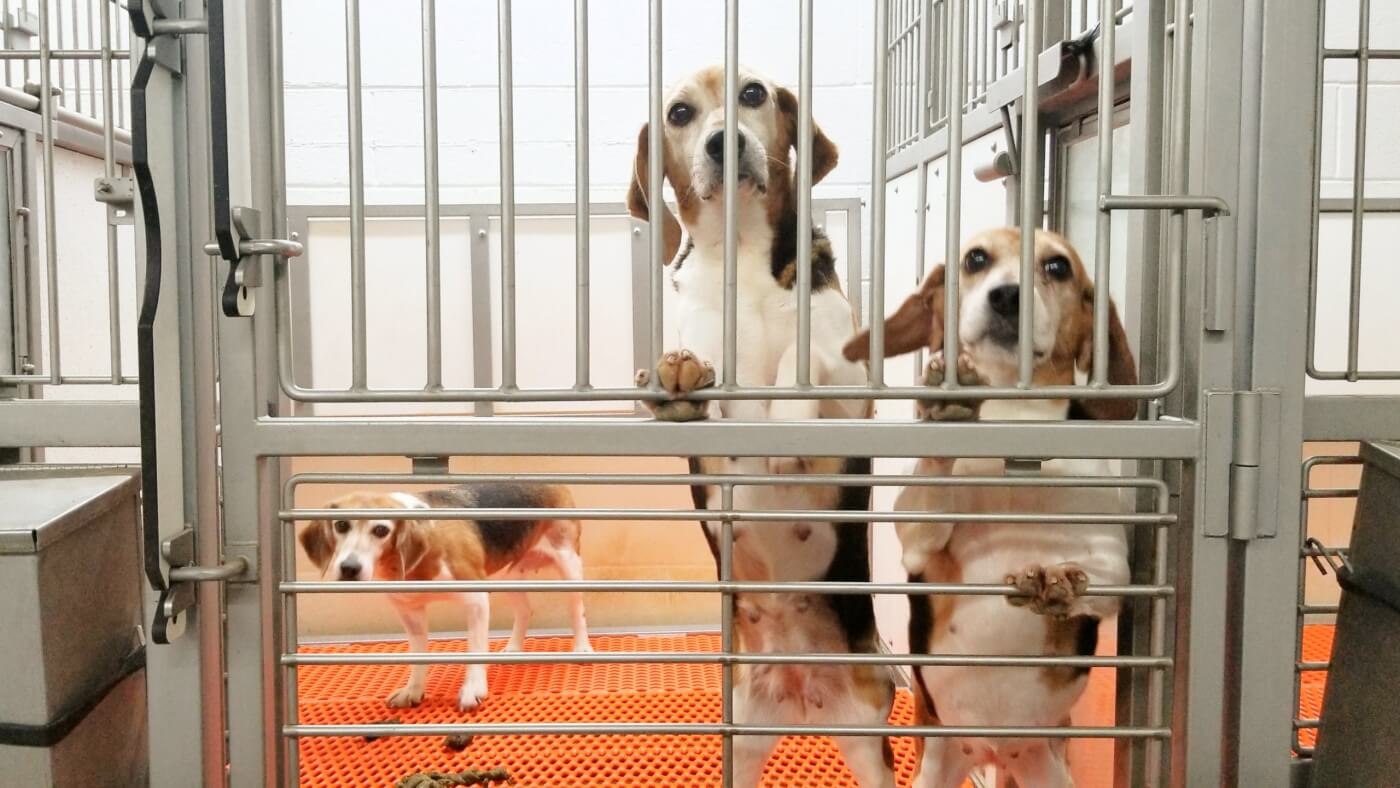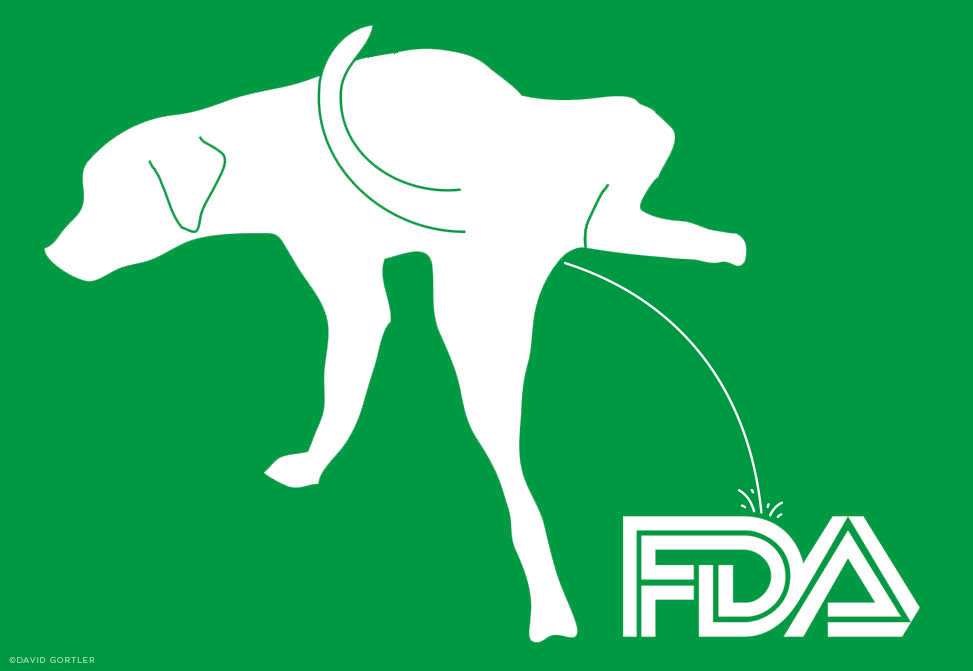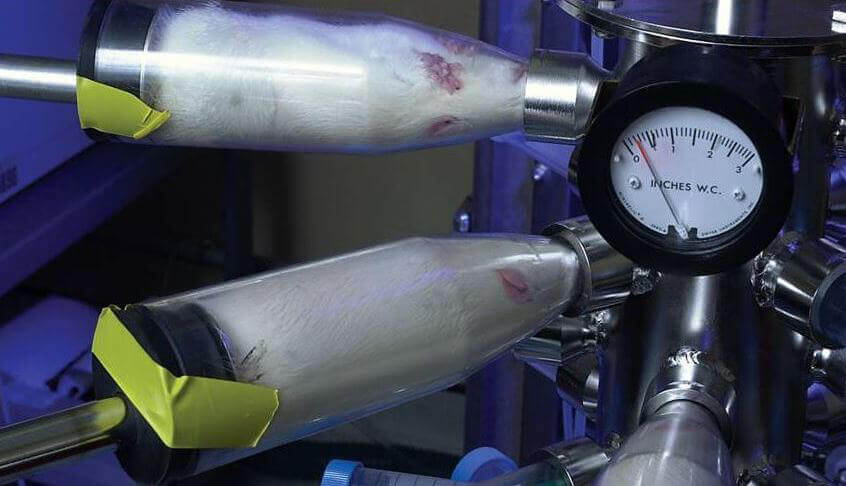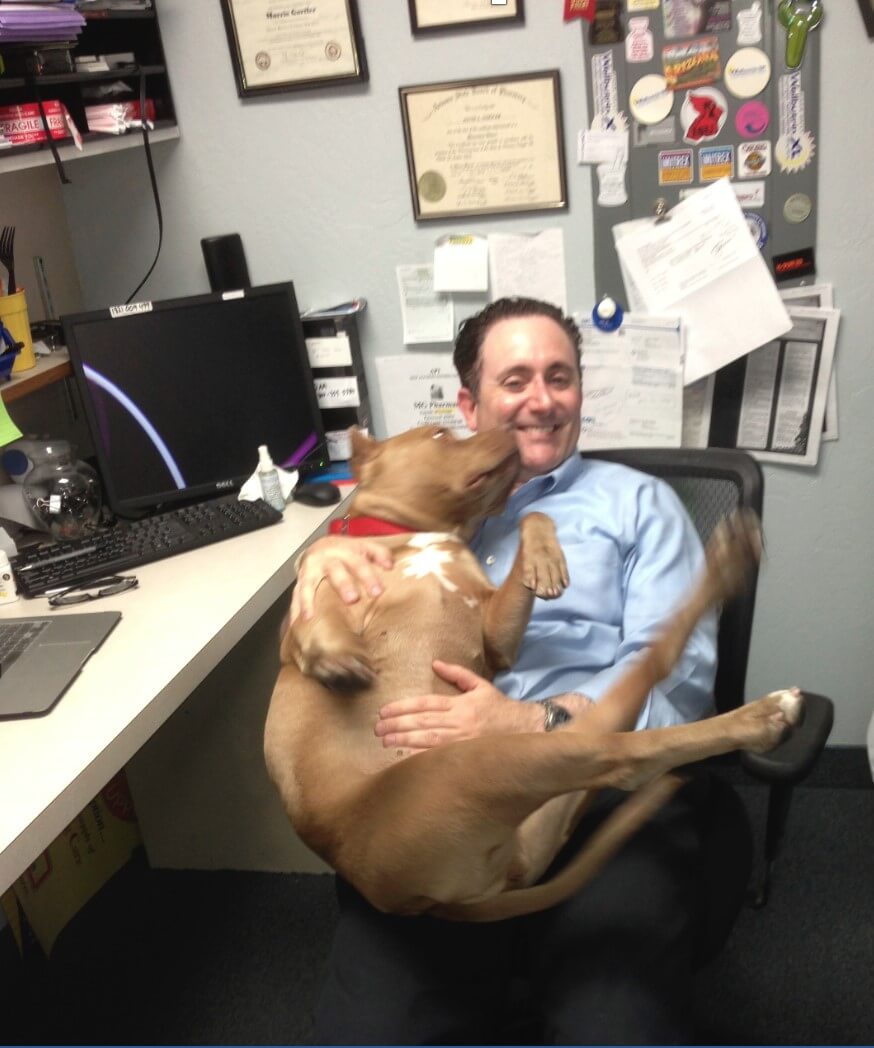Former FDA Senior Advisor Dr. David Gortler Asks: Why Does The FDA’s CDER Director Insist on Cruel Animal Testing in Place of State-of-the-Art Alternative Technology?
Dr. David Gortler
Former FDA Medical Officer and Senior Advisor to the FDA Commissioner
“It is a man’s sympathy with all creatures that truly makes him a man.”
―Albert Schweitzer
Recently the FDA scolded Americans interested in Ivermectin as a COVID-19 treatment by tweeting “You are not a horse. You are not a cow.” The FDA’s tendentious sarcasm is ironic given that the FDA mandates animal testing for all human drug development.
Most Americans would be appalled to know how many animals are stunned, electro-shocked, sleep-deprived, poisoned, vivisected and killed in the name of science at taxpayer expense. As reported recently, researchers with SRI International Study and the University of Georgia, (which Anthony Fauci’s NIAID has acknowledged funding)
Back in late July, the White Coat Waste Project said it obtained documents through a FOIA request which revealed that the NIAID “…just spent $424,000 to commission a study in which healthy beagles are given an experimental drug and then intentionally infested with flies that carry a disease-causing parasite that affects humans.”
NIAID funded a study at the University of Georgia where “…44 beagle puppies who were just 6-8 months old were repeatedly injected with or force-fed an experimental drug for weeks, and then killed and dissected” and “The documents also show that Fauci’s NIH division paid to have the puppies’ vocal cords cut out so they couldn’t bark in the lab while they were being abused.”

Most Americans would be appalled to know how many animals are stunned, electro-shocked, sleep-deprived, poisoned, vivisected and killed in the name of science at taxpayer expense. As appalling as this may seem, that its nowhere near the most macabre things done to animals in the name of “medical research.”
But what if some animal testing is actually required by law?
It’s the Law: Animal Testing is Mandated by the FDA
As a postdoctoral fellow in vascular medicine pharmacology and molecular biology at Yale University and as Pfizer investigational medicine research scientist in the late 90s and early 2000s, one of the experiments I was charged with overseeing and analyzing included what are called LD (Lethal Dose) tests in animals. My colleagues and I would have to determine the LD50— that would kill 50% of the animals after a single administration of the drug. I was deeply conflicted conducting these experiments, but was told that they had to be done for the betterment of mankind. In these kinds of experiments, canines, rodents and other animals were force-fed or injected multiple grams of experimental drugs only to then begin first-in human (FIH) trials by dosing humans —who are ten to 100 times more massive, with milligrams— about 1/10,000th of the dose we gave to animals. This forced animal poisoning was not a Pfizer idea — it was a mandate in the form of antique, codified FDA regulations.
Outdated Technology:
In 1962, Congress passed The Kefauver-Harris Amendments (KHA) to “modernize” scientific methodologies under the Federal Food, Drug and Cosmetic Act and empowered the FDA to mandate animal testing requirements for new drug approvals. Of course, science has advanced tremendously in the last 60-odd years, but the FDA has not kept up. Following the FDA’s lead, neither have most other researchers.
For a sense of how outdated the KHA is: when the FDA adopted animal testing, the average annual income was $5,315, the average price of a new house was $12,700, a gallon of gasoline cost 25 cents, and ABC’s first color television series — The Jetsons — made its debut.
Per Sec. §312.20 (“Requirement for an IND [Investigational New Drug application]”) the Code of Federal Regulations (CFR), the FDA also began requiring comprehensive animal studies for approval of new drugs in humans.
The word “animal” is used specifically and repeatedly in this regulatory text for measures of pharmacology (how the drug exerts its effects) and toxicology (at what dose it causes adverse events), as well as for radiation absorption, the effect on pregnancy, fertility and effects on a developing fetus. Existing FDA regulations allow absolutely no flexibility to explore or implement newer methods that are more predictive for humans because they utilize human biology rather than that of other species. FDA alone holds the power to initiate change. In the meantime, companies must follow these regulatory rules in order to move an investigational medication through the review process to obtain FDA approval.
Beyond regulations, animal tests are enumerated and prioritized in FDA guidance documents. Guidance documents are meant to be non-binding recommendations that reflect the agency’s thinking on a topic, but do not hold the weight of regulations or force of law …or do they? Recently, Vanda Pharmaceuticals sought to avoid conducting a 9-month study on dogs, stating the study — which would kill dozens of dogs— had no scientific justification, but FDA reviewers would not budge, referencing its own guidance documents.
Animal Tests are a Poor Predictor of What Actually Happens in Humans:
After 60 years scientists have learned that the results of animal tests aren’t particularly useful or predictive in humans. Despite this, FDA requires animal tests to be performed for almost every investigational new drug it reviews, regardless of its utility. It’s noteworthy that approximately 90% of early-phase clinical trials fail after “passing” extensive animal testing.

The KHA and FDA’s ongoing failure to move away from animal studies has contributed to over tens of million mice and rats killed per year in the name of science in the US. Separate from that are the other animals killed including, monkeys, rabbits, pigs, guinea pigs, cats. That includes an estimated 20,000 dogs killed per year.
It’s not just the widely disparate animal species and breeds involved that’s a problem; it’s the variety of metabolic pathways and drug metabolites in animals, leading to variation in efficacy and toxicity, disease latency and discordant variation in the schedule of dosing that is only loosely relevant to human beings. When it comes to human health, “loosely relevant” is not good enough. For example, isotretinoin (“Accutane”) causes birth defects in rabbits and monkeys, but not in mice or rats, so is it safe for pregnant mothers? (answer: no).
Rats are physiologically unable to vomit so that can’t be used to assess drugs which cause gastrointestinal upset. Corticosteroids are known to cause congenital abnormalities in many animal species but not in humans, while the opposite is true for thalidomide which is not teratogenic in animals but is in humans.
Many of the animal studies required by the FDA are rather nonsensical, including eye- and skin-irritation tests of drugs that are approved only for oral administration. The National Institutes of Health acknowledges “Approximately 30 percent of promising medications have failed in human clinical trials because they are found to be toxic despite promising preclinical studies in animal models.” Using animals to test human drugs not only hurts animals, it hurts people.
State-of-the-art Animal-Free Alternatives Could Change Drug Testing:
There have been rather dramatic advances in drug testing since the 1960s, including pre-clinical, non-animal testing methodologies.
As a former Senior Executive White House appointee to the FDA, I advised the FDA commissioner and the White House on ways to both FDA-mandated eliminate outdated and cruel animal testing and speed up the drug development process. One of the things I proposed was advancing “Organ on a Chip” (OOC) technologies— which potentially could have done both.
OOCs are made by programming or culturing human cells obtained from relevant human organs (heart, liver, kidney, brain, gastrointestinal) in a microenvironment “chip,” where micro-doses of experimental drugs can be applied (following a lot of math.) OOCs can then be linked to form model human systems, adding additional complexity. Since human cells are used to populate these OOCs, this in vitro technology circumvents — and has the potential to reduce or eliminate — the cruelty and experimental limitations that have always been inherent in animal testing.
The ethical and technological advantages are obvious. OOCs have the potential to predict safe doses more clearly and quickly than animal tests. In addition to being time-intensive and technically complex, animal testing is always subject to varying interpretations, not to mention all the matters of being ethically questionable and necessitating animals’ suffering.
FDA’s Resistance to Change and Ignoring Congress:
As a former academic animal researcher, while at the FDA I spent months preparing a detailed proposal whereby funding would be provided to a few pharmaceutical companies to implement OOCs in tandem with existing animal testing to prospectively test the hypothesis that OOCs would speed pre-clinical drug development by more accurately predicting safety and efficacy in humans. Comparative studies already show that OOC technology better predict human drug responses than crude animal tests, but my scientific report was actively ignored by antagonistic and partisan bureaucrats, specifically that of the FDA’s CDER leader.
Its too bad that the FDA’s CDER chief couldn’t — at least temporarily — lower her partisan guard, and consider listening to objective findings supporting replacing cruel FDA-mandated animal testing from a Trump public health appointee. As the head of FDA’s CDER, the power to change the cruel outdated status quo change is hers and hers alone.
I wasn’t the only one being ignored. In 202o, both the House and Senate directed the FDA to “…review and modify regulations in 21 C.F.R. to clearly reflect the agency’s discretion to accept valid nonclinical approaches” to include changing references to ‘‘animal’’ data to ‘‘nonclinical,’’(e.g., OOC) and report its progress by Sep 30, 2021. The FDA missed the deadline. To date, the FDA has no funding or dedicated staff to dedicate to these methodologies and no guarantee that in vitro or in silico methods (e.g., OOC) will be advanced or even explored.
Concerned scientists everywhere wait for the FDA leader to act, but the FDA continues to ignore the latest science, congress and the ongoing animal cruelty and suffering.
Ending Cruel Animal Testing from the FDA: A 100% Nonpartisan Issue if There Ever Was One:
Alternatives to animal testing such as OOCs already have bipartisan support. Replacing animals with state-of-the-art OOCs is not just an animal welfare issue, it is an issue of public health and reducing the time needed to bring investigational pharmaceuticals to market. It also has clear advantages when dealing with public health emergencies such as COVID-19.
In his inaugural address, President Biden said:
“Many centuries ago, Saint Augustine, a saint of my church, wrote that a people was a multitude defined by the common objects of their love. What are the common objects we love that define us, as Americans?”
Joe Biden went on to rhetorically answer “security, liberty, honor and the truth.” But those can be debated. If I had to answer, I would say that one of the few things that Americans could all come together on in today’s world of partisan politics — just might be — the profound love and appreciation of their pets and other animals.
Over the past six decades, technology has dramatically progressed along with our view of the role of animals in society. Organic and free-range versions of animal-based foods are commonplace in grocery stores and restaurants as well as plant-based alternatives. Work animals from horses to guide dogs are cared for and treated with respect.
In America, 67% of households have a pet (63% of which have dogs) and 90% of all pet owners consider their pet them consider the pet to be a member of their family. This is punctuated by the fact that Americans spend 100 billion dollars on their pets yearly because they authentically love them and care for their well-being. Dogs really are our best friends, and should not be vessels for research.
We love our pets and they love us back. Millions of dog owners over generations have told each other that their dog “is the best dog.” And every one of them is correct.
Bottom line: Americans overwhelmingly disapprove of animal testing. That disapproval percentage might approach 100% if Americans knew that newer and more effective alternatives like OOC could fully replace animal testing.
Fostering Common Sense and Moral Progress on the Treatment of Animals: America’s Zoos Need to go the Way of Fur Coats
Around the world we also see zoos closing their doors because common sense tells us that forcing wild animals to be placed in display behind bars essentially make all zoos an alternate form of animal cruelty. Especially zoos that deceive the public, dishonestly naming themselves “wildlife conservation centers” or “Wildlife sanctuaries” while the zoo’s owners clearly don’t even know the difference. All zoos falsely claim they are “educational” as they keep animals behind bars when in fact they are nothing but cruel animal prisons that rip animals away from the wild, and force them to live in inclement habitats simply so ignorant humans can ogle at them does not represent good teaching.
Many zoos also hauntingly featuring gift shops and serve food to celebrate and make light of the brutality of keeping wild animals locked in cages. In fact, one zoo which deceptively named itself “The Southwest Wildlife Conservation Center” which sells tickets for an annually recurring “Dinner With Wolves” where for a mere $250 per person, you can enjoy a gourmet catered dinner, while imprisoned wild animals watch you eat “just feet away” and cry for their freedom as thoughtless patrons film and applaud. The owner of the facility revoltingly refers to these howling cries ‘a serenade.’ Apparently, tickets regularly sell out.
Obviously, both this zoo’s owners, visitors and the Maricopa county zoning and permitting official, Jen Pokorski made dedicated efforts to ignore the clearly obvious in order to justify and continually allow such a facility to exist and to permit serving a catered dinner in front of hundreds of caged, crying, wild animals. (In other words, welcome to Arizona.)
Visiting, eating and/or tastelessly taking “selfies” at zoos alongside imprisoned wild animals in cages at any facility — is not only not “educational” it is titanically ignorant and thoughtless. It also sends the wrong message to society, especially our children.
Banning Fur and Banning Zoos
Moral progress and ethics have guided retailers’ concern for animal welfare regarding the wearing of fur. Wearing animal fur is another thoughtless practice. According to the Humane Society, 85% of fur for clothing originates in cruel, overseas factory fur farms. Hundreds of brands and stores including Armani, Burberry, DKNY, Coach, Gucci, JC Penny, Lululemon, Macy’s, Neiman Marcus, Nordstrom, Prada and Sears/Kmart have pledged to not deal in fur.
Two years ago, California became the first state in the nation to ban fur sales completely. Earlier in 2021, Israel became the first country to do the same. Other countries have forbidden fur farming and production. It’s clear that the cruelty of raising and killing animals strictly for their hides represents the practice of a bygone era the cruelty of which is very obvious to anyone who thinks about it.
Common sense and moral progress also dictate that the FDA is obliged to keep up with the latest technology to protect public health. That means reducing or eliminate its mandate and reliance on cruel and unnecessary animal tests.
Deep down we all know that it is particularly sinister to abuse domesticated animals and pets that we have bred to love, trust and completely depend on us as human beings. OOC technology has the potential to provide an avenue for a new kind of preclinical testing that doesn’t torture “man’s best friend” or any other animal.
America’s FDA deserves a forward-thinking, open-minded and scientifically nonpartisan generation of leaders who listen to scientific progress, congress, OOC technology and set a positive example against animal cruelty. In the meantime, animals everywhere will continue to suffer.

Dr. David Gortler is a pharmacologist, pharmacist and an FDA and health care policy scholar at the Ethics and Public Policy Center Think Tank in Washington, D.C. He was a professor of pharmacology and biotechnology at the Yale University School of Medicine, where he also served at Yale’s Bioethicist Center, and was an FDA Medical Officer who was later appointed by the White House to serve on the FDA’s Senior Executive Leadership Team as senior advisor to the FDA Commissioner for FDA science policy, FDA drug safety, and FDA regulatory affairs.
He has an elderly red-nosed rescued pit bull named “Cinnamon” who is his best friend. This article was written with her in mind because she is the best dog.

